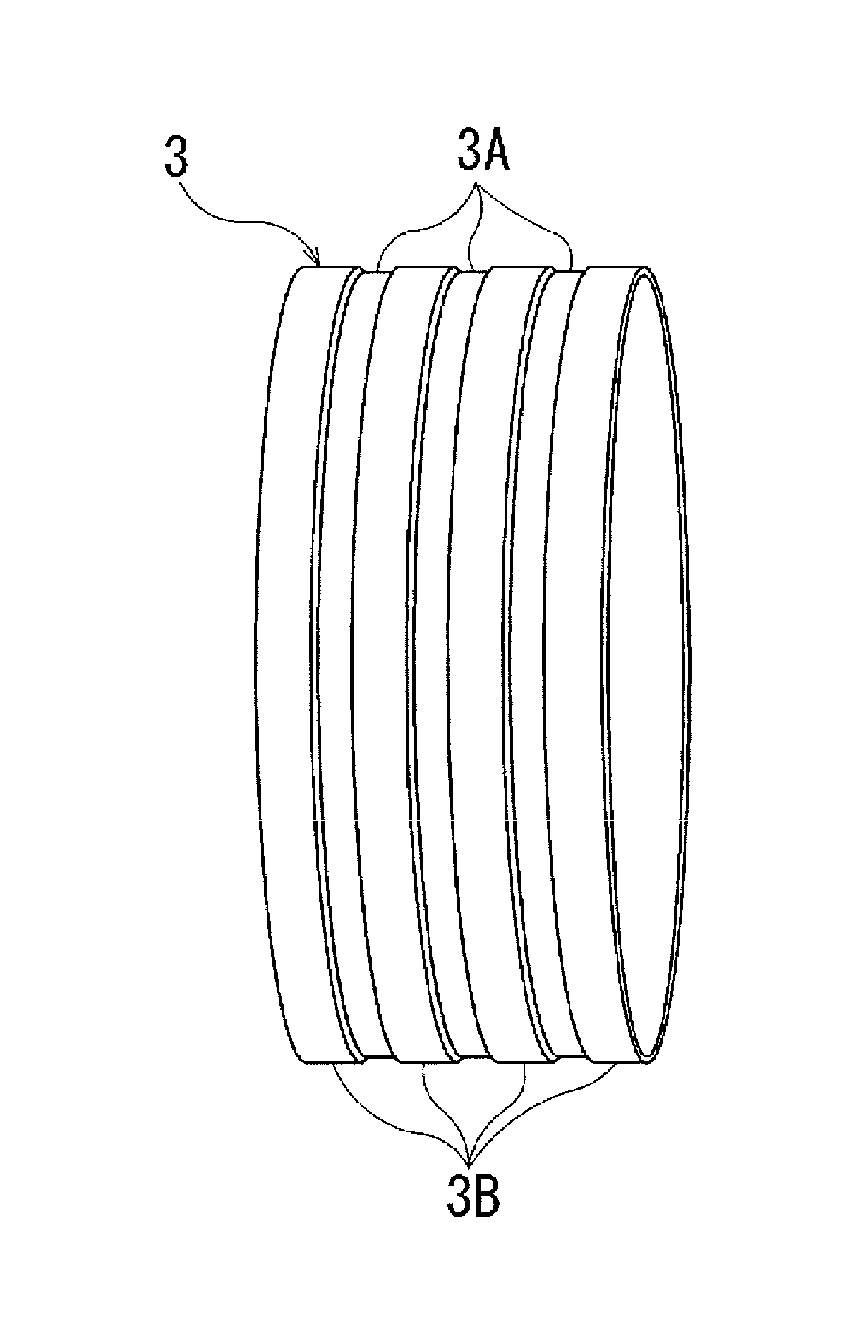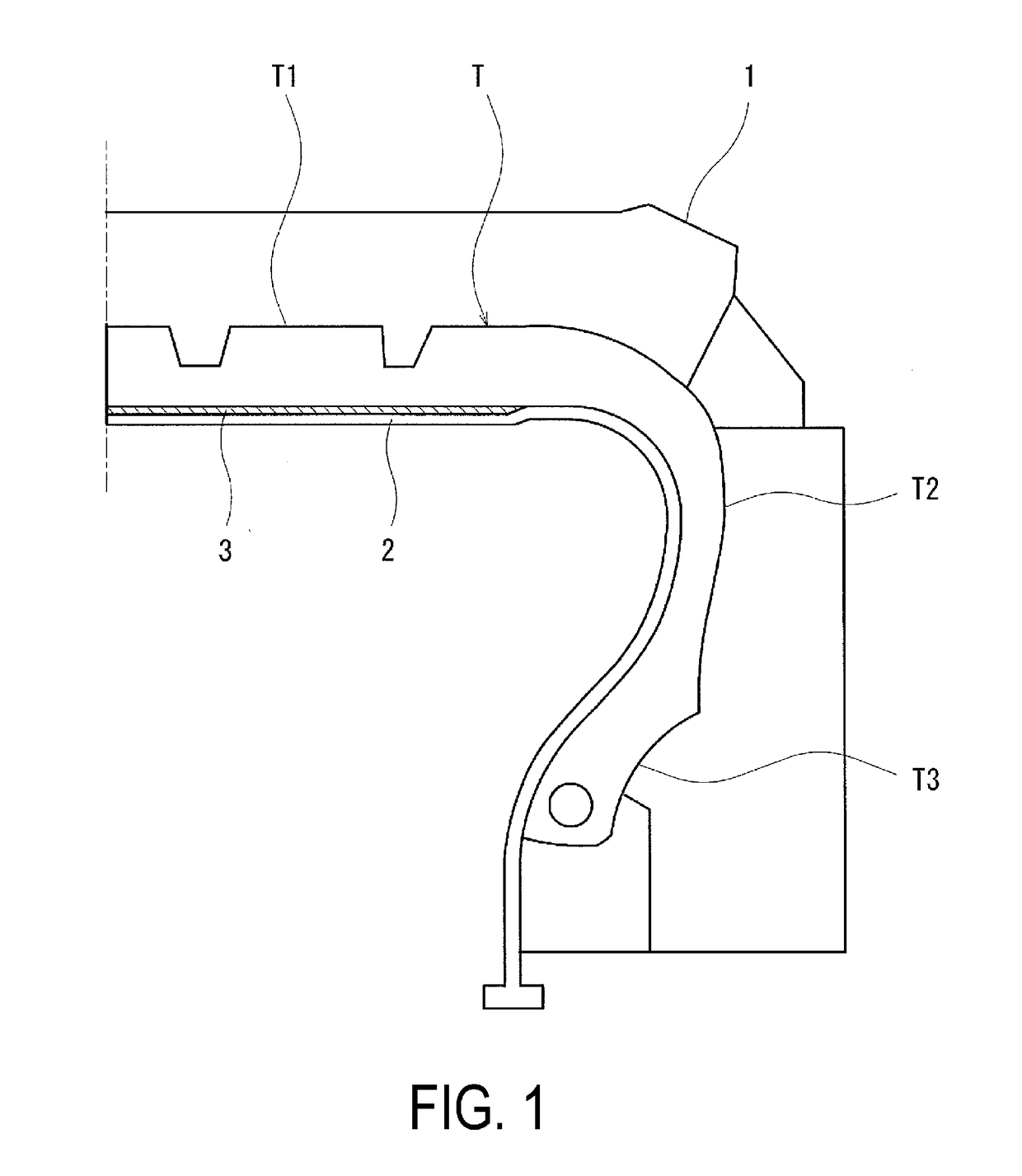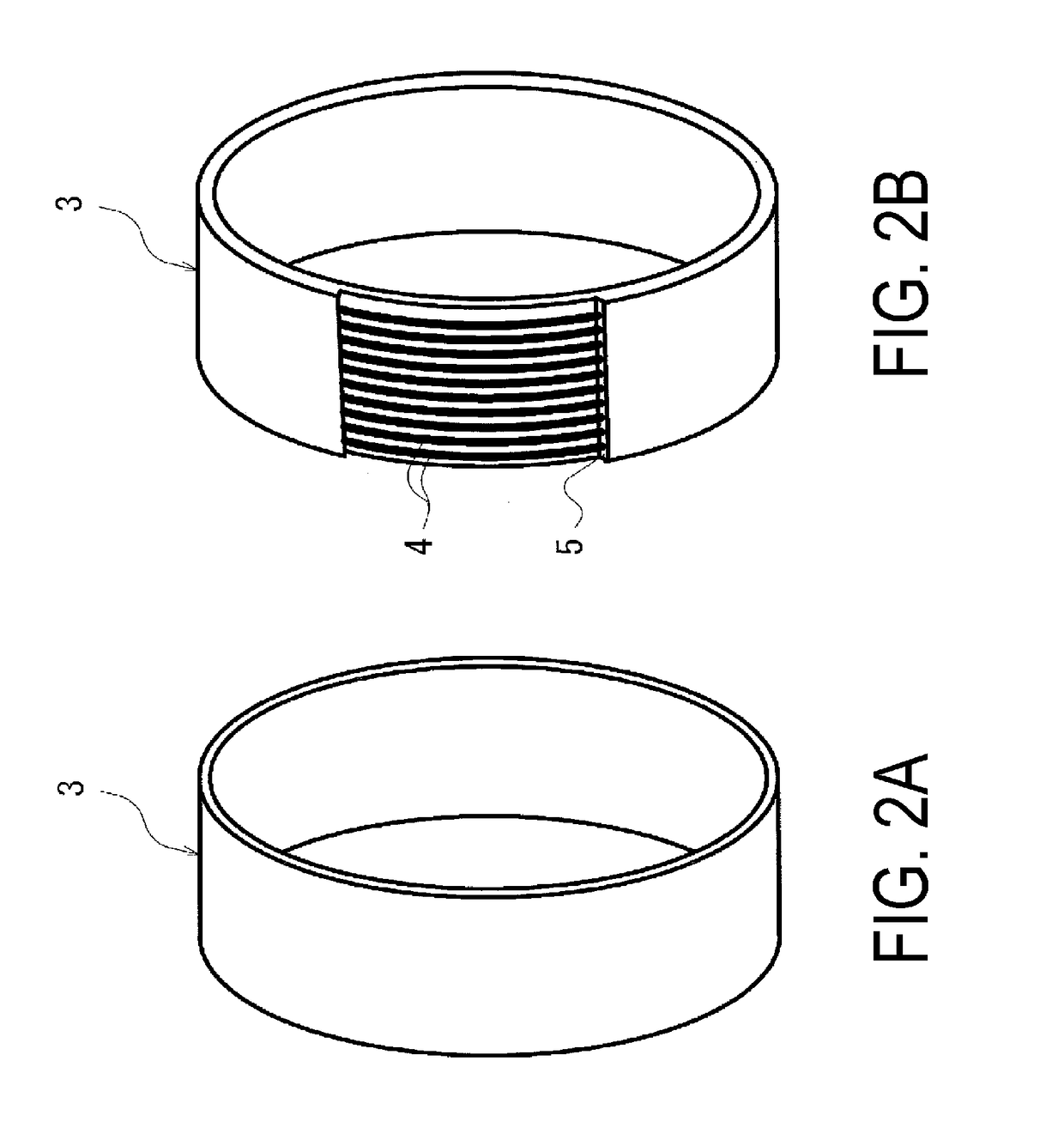Rigidity Reinforcement Ring and Tire Vulcanizing Method Using Same
a technology of rigidity reinforcement and tire vulcanization, which is applied in the direction of tyres, vehicle components, and separate inflatable inserts, etc., can solve the problems of not being able to meet the requirements of tire vulcanization, pneumatic tires may not exhibit the expected tire performance, and applicable tire shapes, etc., to achieve the effect of increasing the degree of freedom in tire design, reducing the thickness of the shoulder portion of the tire, and increasing the dimensional precision of the pneumati
- Summary
- Abstract
- Description
- Claims
- Application Information
AI Technical Summary
Benefits of technology
Problems solved by technology
Method used
Image
Examples
working examples 1 to 4
[0104]Green tires (tire size 205 / 55R16) having identical specifications were manufactured. Each of the green tires was formed by performing vulcanization molding with a rigidity reinforcement ring in Working Examples 1 to 4, and without a rigidity reinforcement ring in Comparative Example 1. Note that the rigidity reinforcement ring used was a cylindrical ring (diameter: 570 mm, thickness t: 2.3 mm) obtained by winding a polyester fiber cord (a cord having a total linear density of 2200 dtex and a twisted structure of 46×46 (two-cord twist)) in a spiral-like manner in the tire circumferential direction using an end count of 50 per 50 mm, covering the wound body with a butyl rubber, and performing vulcanization. Further, a rigidity reinforcement ring without a tapered portion was used in Working Example 1, and a rigidity reinforcement ring with tapered portions having the dimensions shown in Table 1 was used in each of the Working Examples 2 to 4. The rigidity reinforcement rings use...
working examples 5 and 6
[0111]Pneumatic tires (tire size 205 / 55R16) having identical specifications were manufactured. The pneumatic tires of Working Examples 5 and 6 and Comparative Examples 2 and 3 were manufactured by performing vulcanization molding by bladder surface processing or by using a rigid inner ring in Comparative Examples 2 and 3, and by performing vulcanization molding using a rigidity reinforcement ring in Working Examples 5 and 6.
[0112]Note that, in the rigidity reinforcement ring of Working Example 5, an inclined surface was not provided to either end portion of the rigidity reinforcement ring, as illustrated in FIG. 5. In the rigidity reinforcement ring of Working Example 6, an inclined surface was provided to each surface that comes into contact with the vulcanization bladder at a stepped portion formed by thick portions and thin portions having varied thicknesses in accordance with the depths of the recesses of the rigidity reinforcement ring, as illustrated in FIG. 6. Further, an inc...
working example 7
[0119]Green tires (tire size 205 / 55R16) having identical specifications were manufactured. Bladder-less vulcanization was performed using the rigidity reinforcement ring illustrated in FIG. 13 in Working Example 7, and without a rigidity reinforcement ring in Comparative Example 4. Note that the rigidity reinforcement ring used was a ring designed to come into contact with the entire inner side surface of the region corresponding to that from the tread portion to the bead portion. Further, the ring used was a cylindrical ring (diameter: 570 mm, thickness t: 2.3 mm) obtained by winding a polyester fiber cord (a cord having a total linear density of 2200 dtex and a twisted structure of 46×46 (two-cord twist)) in a spiral-like manner in the tire circumferential direction using an end count of 50 per 50 mm, covering the wound body with a natural rubber, and performing vulcanization.
[0120]The inner surface shapes of the pneumatic tires obtained by bladder-less vulcanization in Working Ex...
PUM
| Property | Measurement | Unit |
|---|---|---|
| thickness | aaaaa | aaaaa |
| thickness | aaaaa | aaaaa |
| thickness | aaaaa | aaaaa |
Abstract
Description
Claims
Application Information
 Login to View More
Login to View More - R&D
- Intellectual Property
- Life Sciences
- Materials
- Tech Scout
- Unparalleled Data Quality
- Higher Quality Content
- 60% Fewer Hallucinations
Browse by: Latest US Patents, China's latest patents, Technical Efficacy Thesaurus, Application Domain, Technology Topic, Popular Technical Reports.
© 2025 PatSnap. All rights reserved.Legal|Privacy policy|Modern Slavery Act Transparency Statement|Sitemap|About US| Contact US: help@patsnap.com



